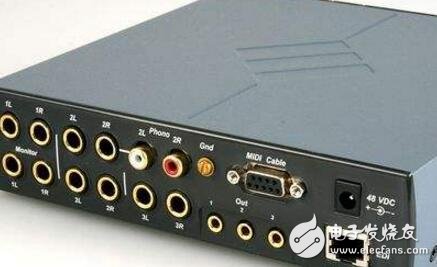Digital audio is a technology that uses digital methods to record, store, edit, compress, or play sound. It represents a new form of sound that has emerged with the advancement of digital signal processing, computer technology, and multimedia systems. The primary applications of digital audio are in music production and post-production processes.
Computer data is stored in binary format—0s and 1s. Similarly, digital audio works by converting analog sound waves into digital data. This involves sampling the sound at regular intervals and converting it into binary code for storage. When playing back, this digital data is converted back into an analog signal, which is then sent to speakers for playback. Unlike traditional formats like tapes, radio, or TV, digital audio offers more reliable storage, lower costs, and no degradation during transmission or storage. Additionally, it allows for easy editing and manipulation.

**Digital Audio Interfaces:**
Common digital audio interfaces include I2S, PCM, and SPDIF. Here's a brief overview:
- **I2S Interface:**
This interface is designed to transmit mono or stereo digital audio in PCM format. It has three variations: left-aligned, right-aligned, and standard I2S. I2S is known for its excellent timing performance and is ideal for short-distance communication.
- **PCM Interface:**
Also referred to as DSP mode, this interface is typically used for mono or stereo audio but can theoretically support multi-channel audio as well. It also uses PCM format for data transmission.
- **SPDIF Interface:**
Short for Sony/Philips Digital Interface, this interface supports both coaxial and optical fiber connections. Optical versions offer better noise immunity. SPDIF can carry PCM streams, as well as compressed audio formats like Dolby Digital and DTS.

**Digital Audio Applications:**
Although not as widespread as analog audio, digital audio has found its niche, especially in music recording and post-production. It allows for high-quality storage and playback, making it ideal for professional use. During playback, digital audio converts stored data back into an analog signal, which is then output through speakers. This process ensures minimal distortion and high fidelity.
Compared to traditional audio sources like radios or TVs, digital audio offers advantages such as easier storage, lower costs, and the ability to edit and manipulate files without quality loss. These features make it a preferred choice for musicians, producers, and audio engineers.

**Basic Concepts of Digital Audio:**
Understanding digital audio requires knowledge of key terms such as sampling rate, compression ratio, bit rate, and quantization. The sampling rate determines how many times per second the audio signal is measured, and a higher rate usually results in better sound quality. The compression ratio refers to the reduction in file size after compression. Bit rate indicates the amount of data processed per second, and quantization defines the precision of each sample. These factors collectively influence the overall quality and efficiency of digital audio. If you're interested in learning more about these concepts, there’s plenty of detailed information available online.
Mc4 Fuse Connector,Slocable Solar Pv Fuse,Mc4 Connector With Fuse,Mc4 Inline Fuse Connector
Sowell Electric CO., LTD. , https://www.sowellsolar.com